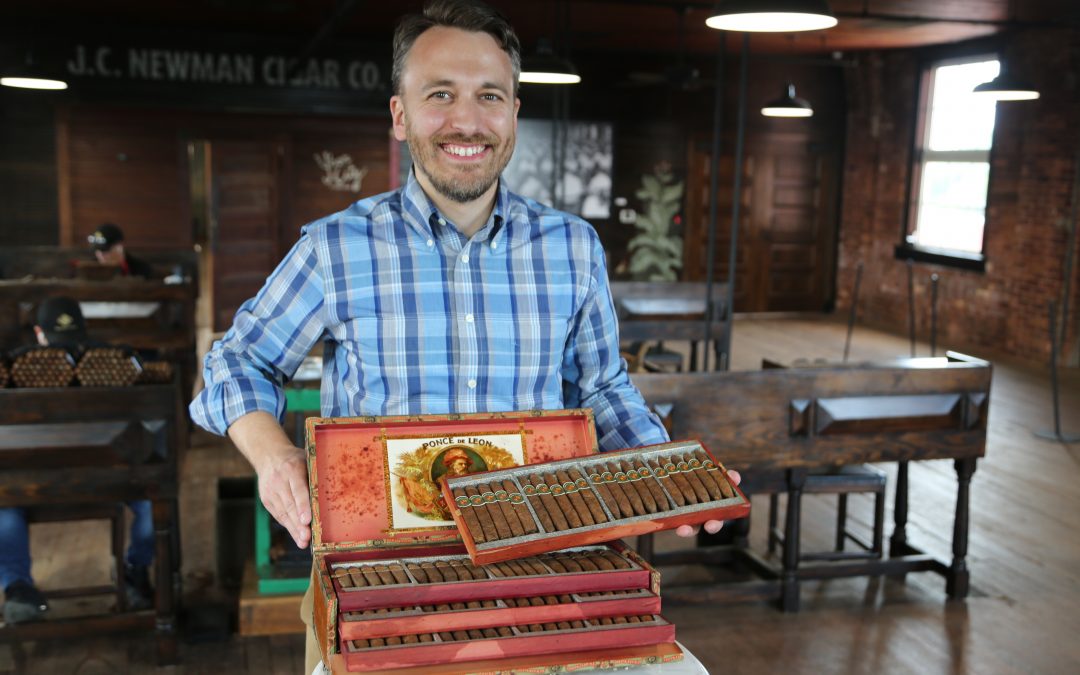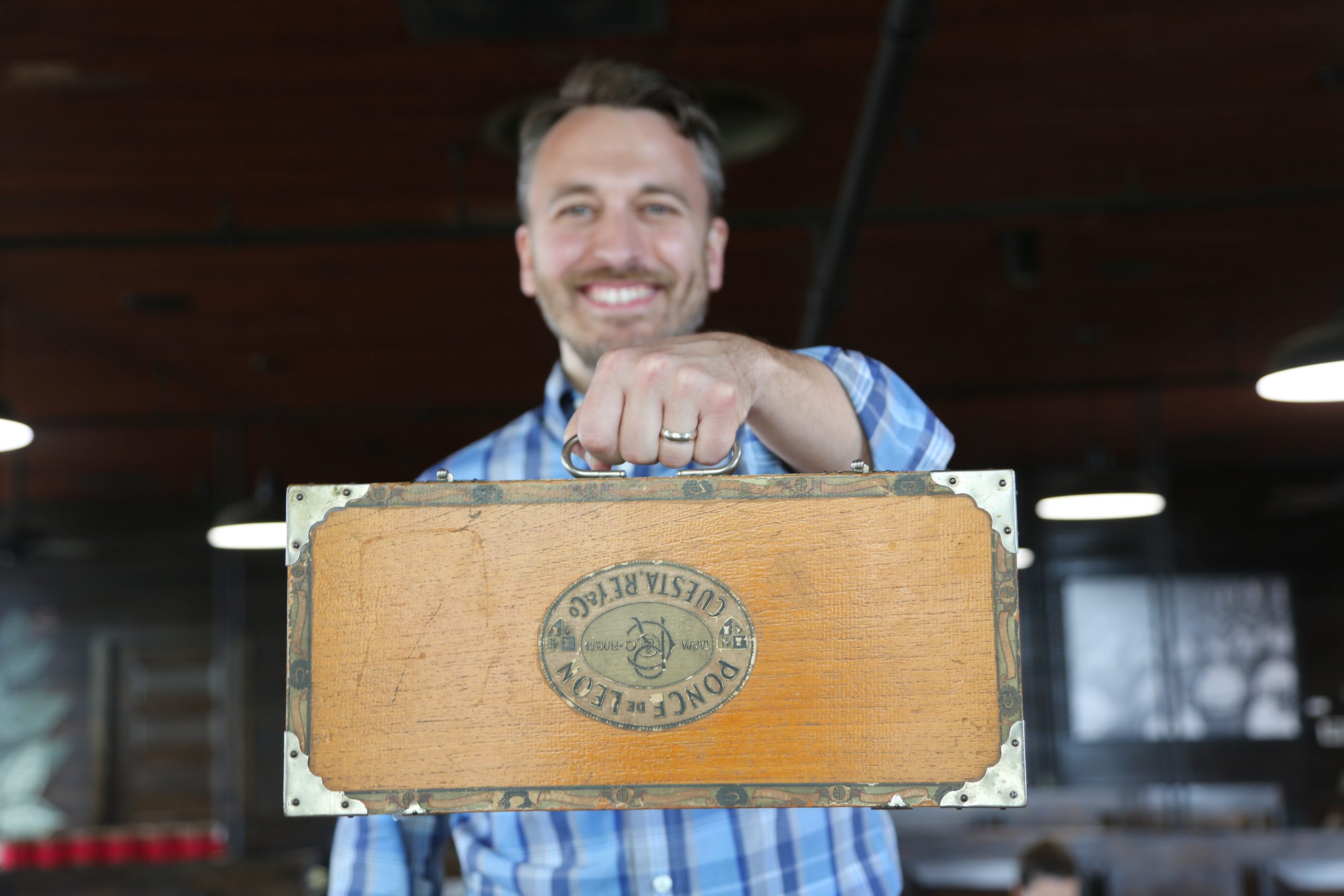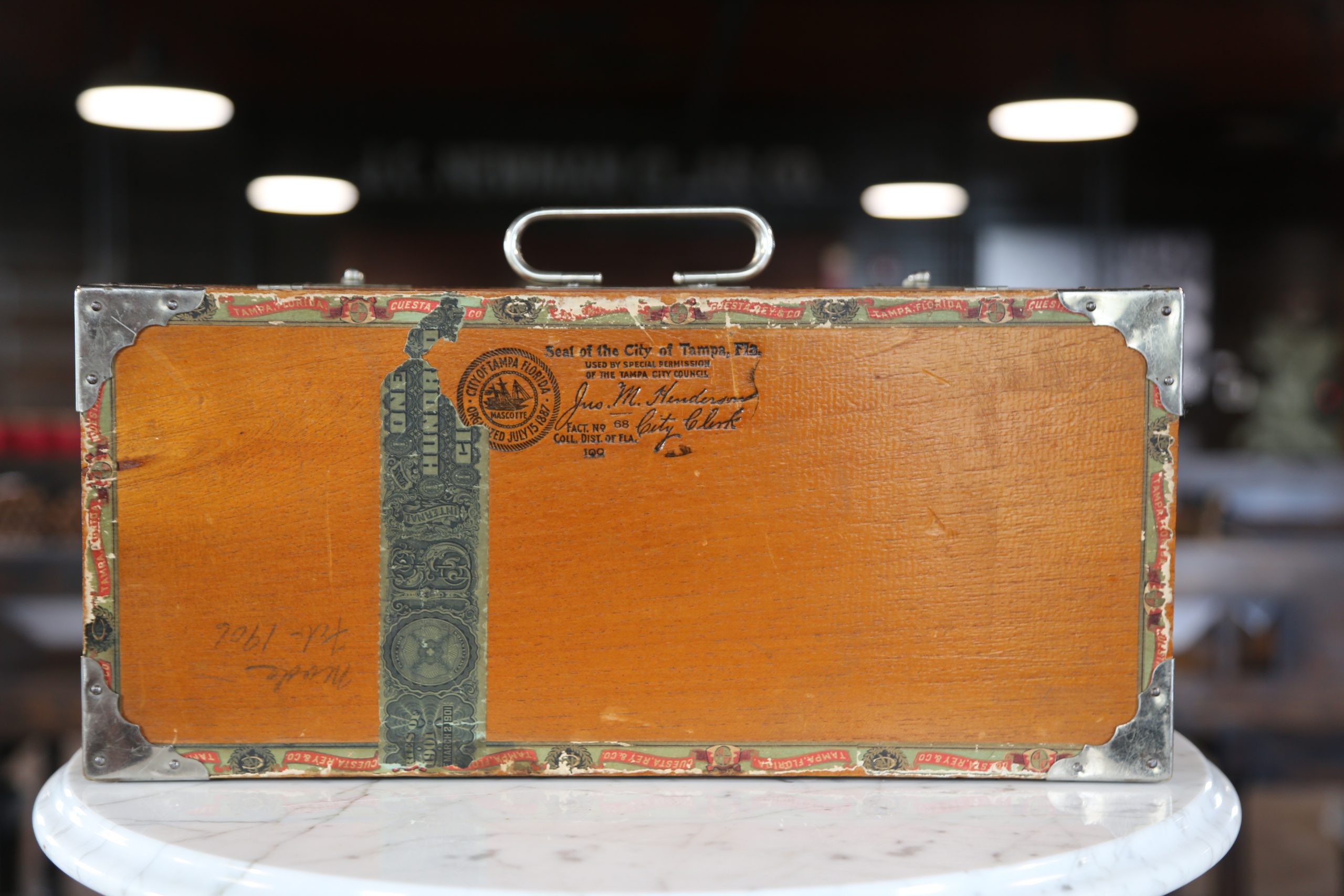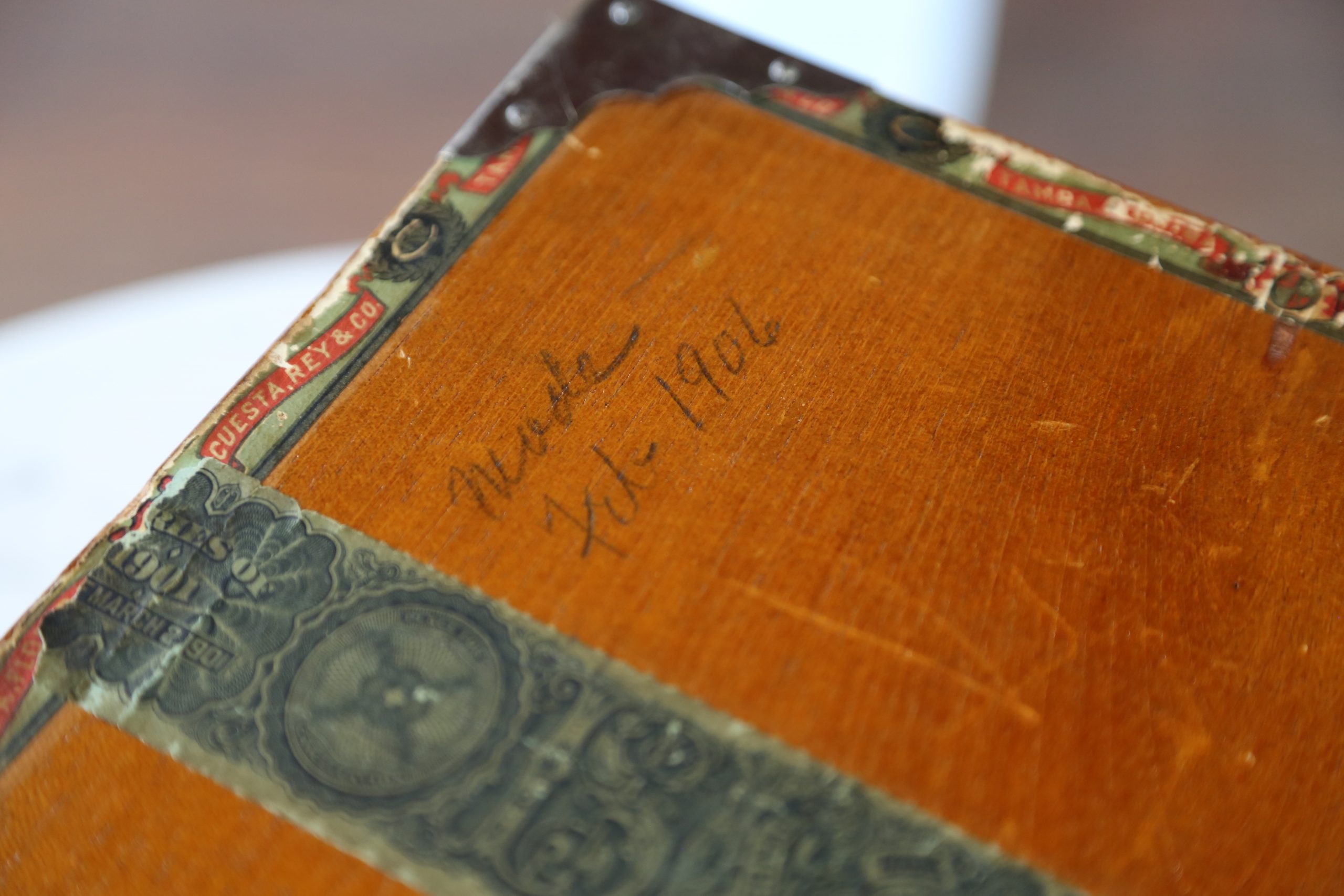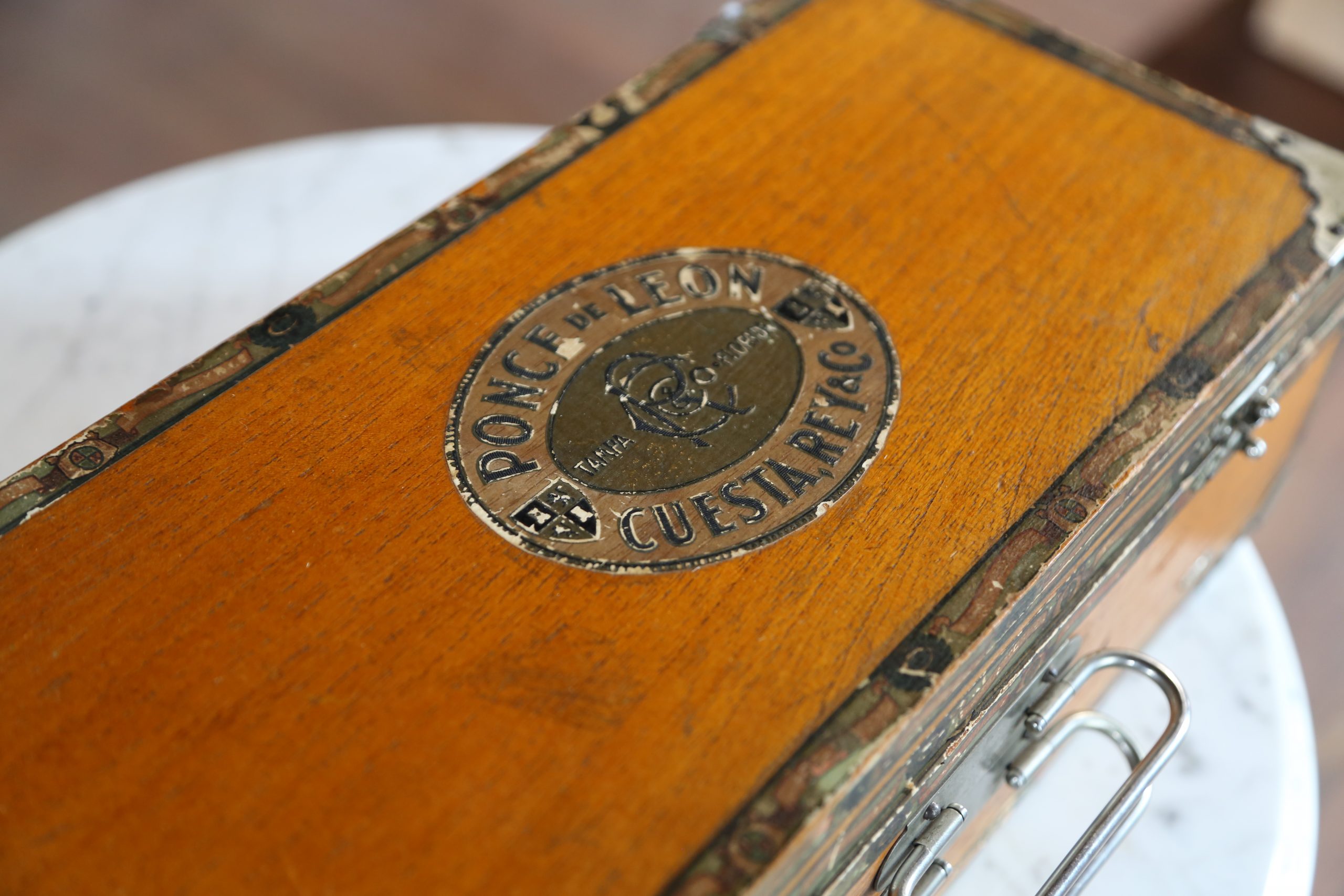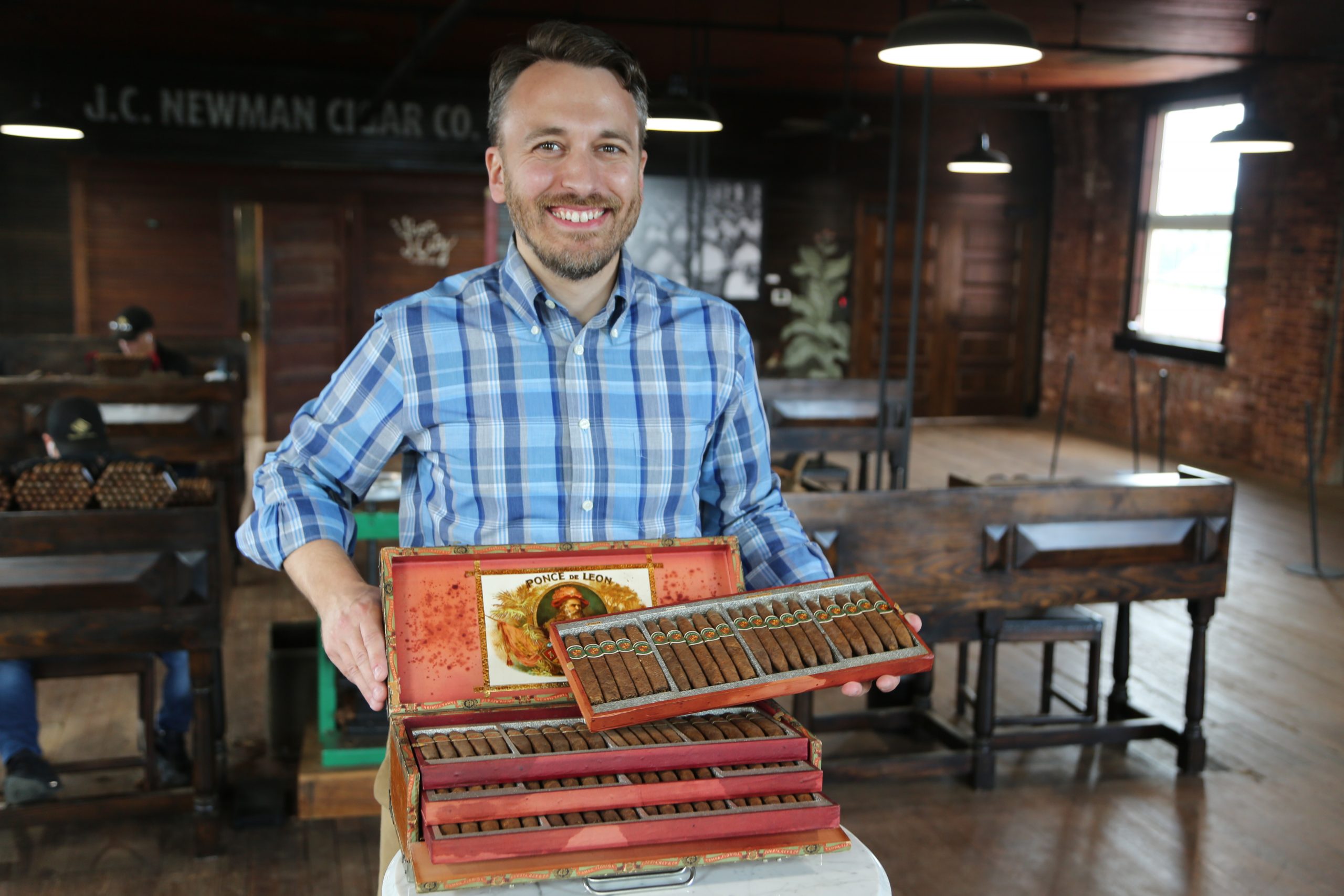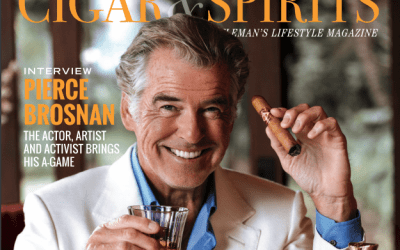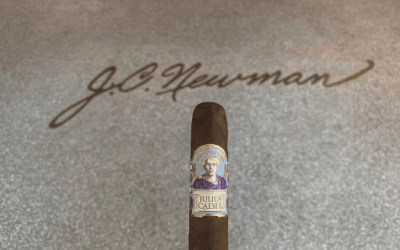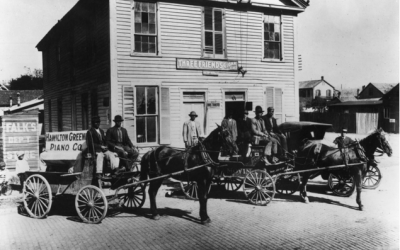116-year-old Ponce De Leon Cigars Discovered
These special cigars are on display at our El Reloj Factory Museum
J.C. Newman Cigar Co. has proudly manufactured Cuesta-Rey cigars since 1958. Prior to that, Cuesta-Rey enjoyed a rich history of independent cigar manufacturing going back to 1884. Cuesta-Rey boasts a hundred and thirty-eight years of tobacco excellence. La Flor de Cuesta-Rey, El Anclo, La Favorita de Tampa, El Dedicado, White Heather, La Única, and Ponce de Leon are some of the fine cigar brands manufactured by Cuesta-Rey. J.C. Newman Cigar Co. now proudly displays some of these historic cigar brands in its 1910 El Reloj Factory Museum, including Ponce de Leon cigars from 1906!
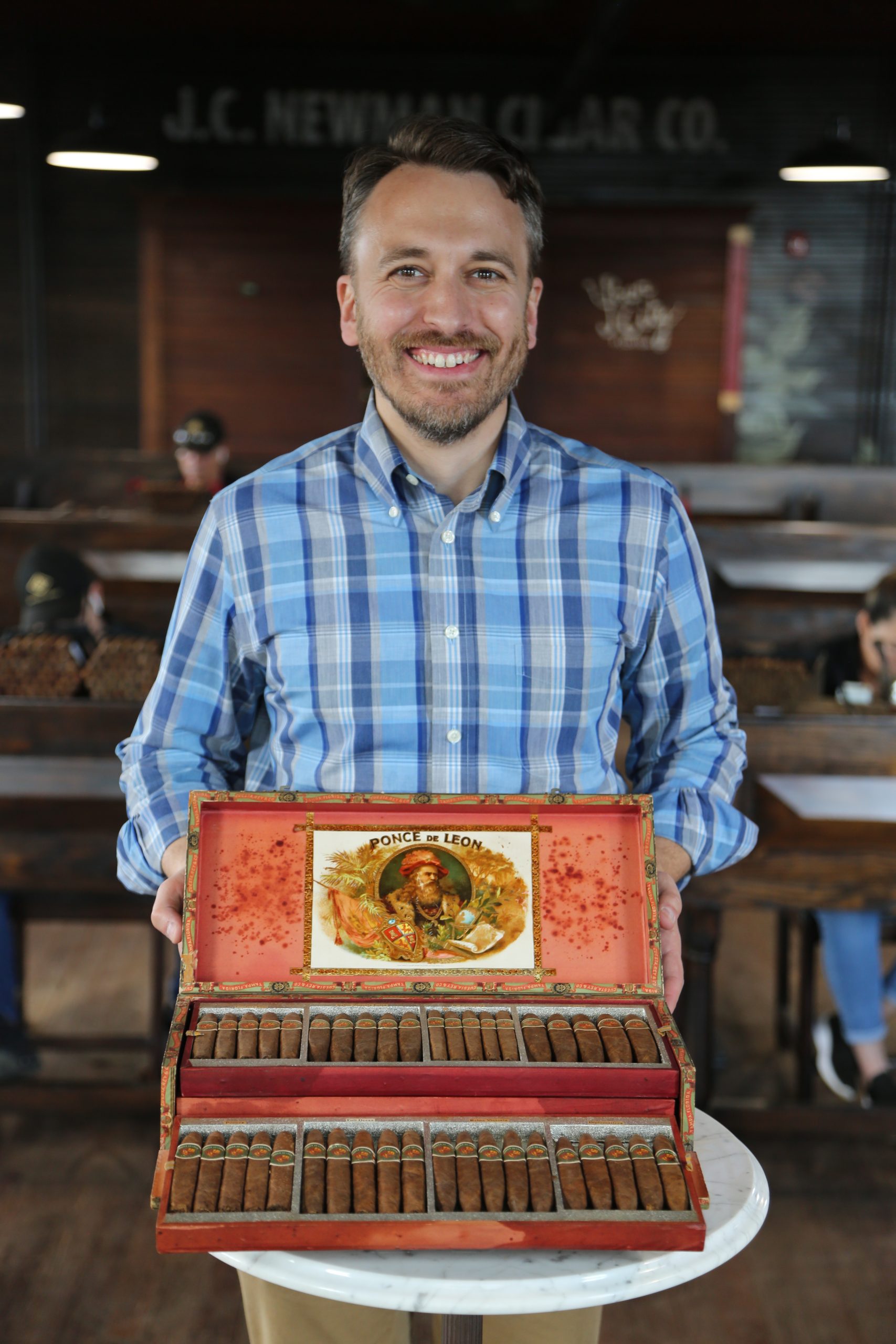
Cuesta-Rey Cigar Co.
Born in Asturias, Angel LaMadrid Cuesta and his brother Vicente were sent to live with their godfather in Cuba. The hope was that Cuba would give the young men a greater opportunity to succeed than a life in the north of Spain. In the same way, J.C. Newman’s mother brought the Newman family to the United States in hopes of finding a better way of life compared to the living conditions for Jewish working-class people in Austria-Hungary. The Cuesta brothers first entered the cigar industry in the 1870’s and 1880’s handrolling cigars and selecting tobaccos in Cuba. Angel would go on to begin an American cigar factory with a trusted business associate and tobacco selector named Peregrino Rey. This operation moved to Tampa in search of a more stable and plentiful supply of imported Cuban (Havana) tobacco. Alongside Garcia y Vega and Arturo Fuente, Cuesta-Rey became the most famous Tampa cigar brand. The company would open cigar factories in the historic Cuban neighborhoods of West Tampa and Ybor City, manufacturing cigars in Tampa from 1893 to 1958. Cuesta-Rey made cigars in Tampa during the peak years of the cigar industry there, being called the “Cigar City” and making over 700 million cigars a year!
J.C. Newman and Cuesta-Rey Cigar Co.
Ponce de Leon
Predating J.C. Newman’s acquisition of Cuesta-Rey Cigar Co., Cuesta-Rey manufactured a brand of cigars called Ponce de Leon. As the name of the brand suggests, the cigars were marketed as handmade cigars of legendary craftsmanship. Possessing selected aged Cuban tobaccos, these cigars encouraged adventurers and explorers to seek after them in the same way that Ponce de Leon came to Florida in the 1500’s in search of glory and the fabled fountain of youth. Honoring the four-hundredth anniversary of Ponce de Leon’s discovery of Florida, the cigar was exhibited to much fanfare at the Panama-Pacific World’s Exposition in San Francisco in 1915. The cigar won awards at dozens of other World’s Fairs, including New York and St. Louis. Angel LaMadrid Cuesta, himself a veteran of the Spanish colonial forces in Cuba, gifted Ponce de Leon cigars to American troops stationed in France in the 1910’s as well as Spanish troops fighting in Morocco in the 1920’s. The cigar’s manufacturing run canvassed a long period of Cuesta-Rey’s history from 1901 to the 1958.

J.C. Newman’s Collection
Ralph Stow, a dedicated J.C. Newman aficionado, discovered his own fountain of youth in a business associate’s basement in Dallas, Texas. Stow came into possession of nothing short of the most remarkable find in antique tobacciana: a complete set of Cuesta-Rey Ponce de Leon sample vitolas in a traveling salesman’s case from 1906! Stow knew immediately this was a one-of-a-kind item and got into contact with a J.C. Newman regional salesman so the cigars could be safely acquisitioned and brought “home.” Although J.C. Newman no longer manufactures Ponce de Leon cigars, the cigar case represents an important chapter in the company’s long and multifarious narrative. The cigars range in ring gauge from thirty-two to fifty-two. Furthermore, the cigars are all short and unique in shape, tapering at both ends—a figurado, compared to today’s cigars. This was commonplace for the cigar industry prior to the 1960’s.
These cigars are relics from the golden age of cigar manufacturing for Tampa and the world. The traditions of Angel LaMadrid Cuesta are carried on today by J.C. Newman Cigar Co. and other Tampa cigar manufacturers, such as Arturo Fuente y Cia. For the Newman family, the Cuesta-Rey brand sustained through the very difficult years after the Cuban Embargo in 1962. Without the benefit of a nationally sold flagship brand, selling American cigars made without Cuban tobacco would have been a more difficult challenge. Stanford Newman was so proud of the brand he made the iconic “Home of Cuesta-Rey Cigars” neon sign for the Newman’s El Reloj cigar factory in Tampa. Another interesting point to this story: Ralph Stow asked for nothing in return save for a donation in support of a veterans non-profit: Folds of honor. Just as Angel Cuesta showed his generosity in support of American and Spanish servicemen in the early 1900’s, the cigars pay dividends to American veterans today. Who knows what else these cigars might inspire? Perhaps a renaissance of Tampa cigarmaking is just around the corner…
Scroll through our gallery of our 116-year-old Ponce de Leon Cigars
Cigars in the Era(s) of James Bond
Recalling all the cigars smoked by James Bond as Pierce Brosnan poses with a J.C. Newman Diamond Crown Classic cigar on the cover of the January 2021 issue of Cigar & Spirits magazine.
J.C. Newman Cigar Co. Anniversaries
America’s oldest, family-owned premium cigar manufacturer is a result of countless business decisions and sacrifices from the Newman family.
Ybor City’s Underbelly
Native Tampans know a thing or two about criminal elements in Ybor City in the early 20th Century. Ybor City’s criminal underbelly was reflective of the economic and cultural divides of the city.
